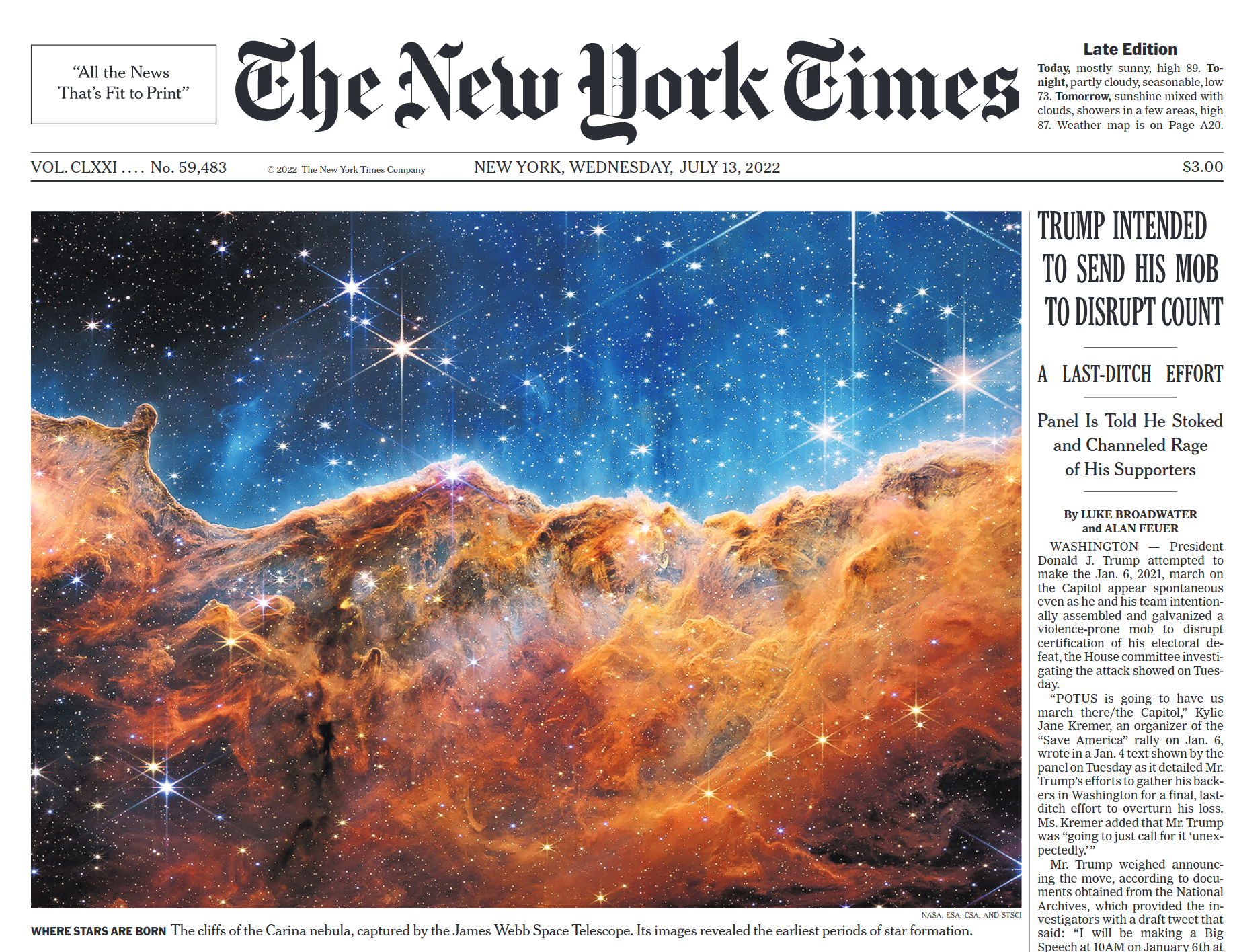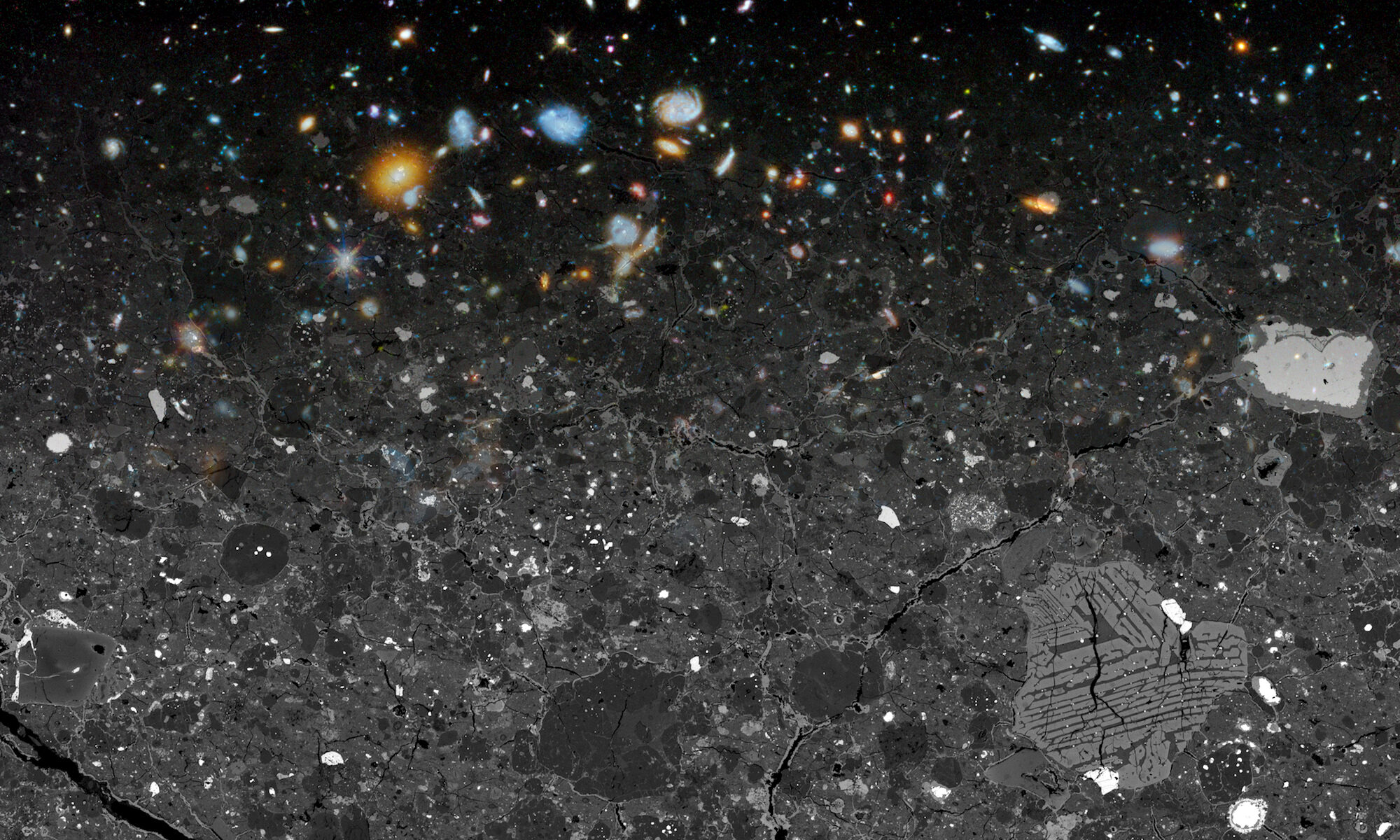New paper by former grad student Kainen on amazing filamentary enstatite crystals in cometary interplanetary dust particles.
Lafayette Martian Meteorite
Lafayette is one of my favorite meteorites.

There was always a mystery surrounding how it was found. Here’s a cool new story on recent insights into the Lafayette find.
Deimos + Jupiter and the Galilean Moons
Phobos and Deimos look so cool from the surface of Mars. This video of Deimos passing over Jupiter and its four largest moons, taken from Mars Express, is amazing:
From left to right: Europa, Ganymede, Jupiter, Io, and Callisto.
St. Louis Fireball!
Kilcoyne
Scooby Doo and the Case of the Missing Interstellar Amorphous Silicate
New paper related to this important mystery!
I think the answer is GEMS. Yoinks!
Carina nebula

Great to see the new JWST image of the Carina nebula on the front page of the NYTimes. A stellar nursery in exquisite detail, I gasped at the live reveal! So cool.
Byrne on JWST
Our WUSTL colleague Paul Byrne explains why we should all be excited about new data from the James Webb Space Telescope. A new dawn for planetary science and astronomy!
McKeegan Story
Ryugu analyses featuring Sachiko
The first analyses of asteroid Ryugu material is published in Science, featuring our very own Sachiko Amari. Exciting stuff! Oxygen isotopes:

